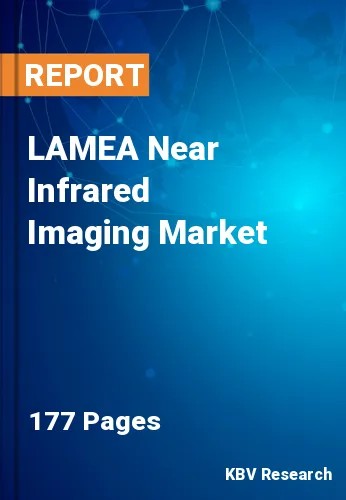The Latin America, Middle East and Africa Near Infrared Imaging Market would witness market growth of 11.6% CAGR during the forecast period (2023-2030).
A significant number of individuals have opted for extensive microsurgery as a result of the proliferative nature of chronic diseases induced by stress, occupational stress, sedentary behavior, poor nutrition, chemical exposure, and heredity. Moreover, the increasing recognition among individuals of the benefits associated with promptly addressing medical issues through surgical intervention drives the demand for such procedures, thereby expediting the implementation of near-infrared imaging.
In agriculture, near-infrared imaging is used in techniques like remote sensing to monitor crop health, soil moisture levels, and vegetation patterns. By analyzing the reflectance of near-infrared light from plants, researchers and farmers can gain insights into the condition of crops and make informed decisions about irrigation, fertilization, and pest management. Additionally, in astronomy, near-infrared imaging is used to study celestial objects that emit radiation in the near-infrared range. This includes stars, galaxies, and other astronomical phenomena that are not easily observable in the visible spectrum due to obscuring dust clouds or other factors.
The vast majority of Middle Eastern patients with coronary artery disease (CAD) have at least one of the four conventional risk factors (RFs), i.e., hypercholesterolemia, diabetes mellitus (DM), hypertension, and smoking. Multiple cardiovascular RFs worsen patient prognosis by amplifying atherosclerosis development and raising the intensity, variety, and expense of long-term medical care. As a result, there is a growing need for diagnostic and imaging methods that will aid in identifying the underlying factors responsible for the disease. Such factors have expedited the growth of the market in this region.
The Brazil market dominated the LAMEA Near Infrared Imaging Market by Country in 2022, and would continue to be a dominant market till 2030; thereby, achieving a market value of $72.6 million by 2030. The Argentina market is showcasing a CAGR of 12.2% during (2023 - 2030). Additionally, The UAE market would register a CAGR of 11.3% during (2023 - 2030).
Free Valuable Insights: The Worldwide Near Infrared Imaging Market is Projected to reach USD 3.2 Billion by 2030, at a CAGR of 6%
Based on Product, the market is segmented into Reagents (Indocyanine Green (ICG) and Others), Devices (Near-infrared Fluorescence Imaging Systems and Near-infrared Fluorescence & Bioluminescence Imaging Systems). Based on Application, the market is segmented into Preclinical Imaging, Cancer Surgeries, Gastrointestinal Surgeries, Cardiovascular Surgeries, Plastic/Reconstructive Surgeries, and Others. Based on End User, the market is segmented into Hospitals & Clinics, Pharmaceutical & Biotechnology Companies, and Research Laboratories. Based on countries, the market is segmented into Brazil, Argentina, UAE, Saudi Arabia, South Africa, Nigeria, and Rest of LAMEA.
By Product
By Application
By End User
By Country
Our team of dedicated experts can provide you with attractive expansion opportunities for your business.

